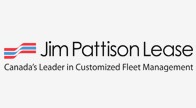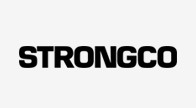In order to ensure you have the right ADA signs for your Toronto or Mississauga area business, it’s best to work with an experienced signage company that has the knowledge needed to create signage that meets all AODA/ADA regulations. Unfortunately, many businesses try to cut corners and end up with ADA signs that don’t quite do the job. Imagine custom ADA signs that have loose characters or use letters that are too small or too tightly spaced? In actual fact, the requirements for ADA signs are not very complicated when you pay close attention to the specifications for both design and fabrication.
Non-compliant signs used in the interior or exterior of your business are typically the result of lack of knowledge, ignoring guidelines or only prioritizing aesthetics. For example, a common ADA violation involves failure to provide accessible information in public places for persons with disabilities, such as poorly created custom ADA signs outside of restrooms. More specifically, the types of interior signage that require compliance are bathroom signs, room identification signs and wayfinding signs.
How To Create Effective ADA Signs
The obligation to have ADA compliant signage is on you, so it’s very important that you understand what is required for the interior of your building space. Not only is it the law, but it also creates a safe and welcoming environment for everyone. While you should be aware of all aspects of ADA requirements, in this post we’re outlining four very important elements that should not be overlooked.
- Font.
When it comes to choosing a font for your custom ADA signs, know that there are specific guidelines to follow. Character size is regulated, and all tactile lettering on ADA signs should be sans serif. Simple fonts work best. From a design point of view, you can still make ADA signs more appealing using colours, shapes, and different materials.
- Spacing.
The rules for spacing are quite restrictive, specifying a minimum of 1/8” between the two closest points of any braille characters. In some cases, certain characters may need to be spaced further apart, making the spacing wider than what would typically be used.
- Character size.
The size for tactile sign lettering is simple. The minimum height is 5/8” and the maximum is 2”. This rule can easily be overlooked if the design doesn’t allow enough room for both compliant Braille and tactile lettering.
- Mounting height.
There is a variance of 48″ to 60”, and the mounting height of the sign is based on the height of the tactile characters above the floor.
SSK Signs Can Deliver The Custom ADA Signs You Need
ADA signs don’t need to be complicated, but they do need to be compliant. Ensuring the right signs are used in your facility requires an understanding of specific and particular details. Let SSK Signs be your ADA signage expert. We have the knowledge and expertise to complete all of your ADA signage needs, including installation, so that you can feel confident your space is fully compliant. To get started, contact us and learn more about how we can provide you with signage solutions that work.















